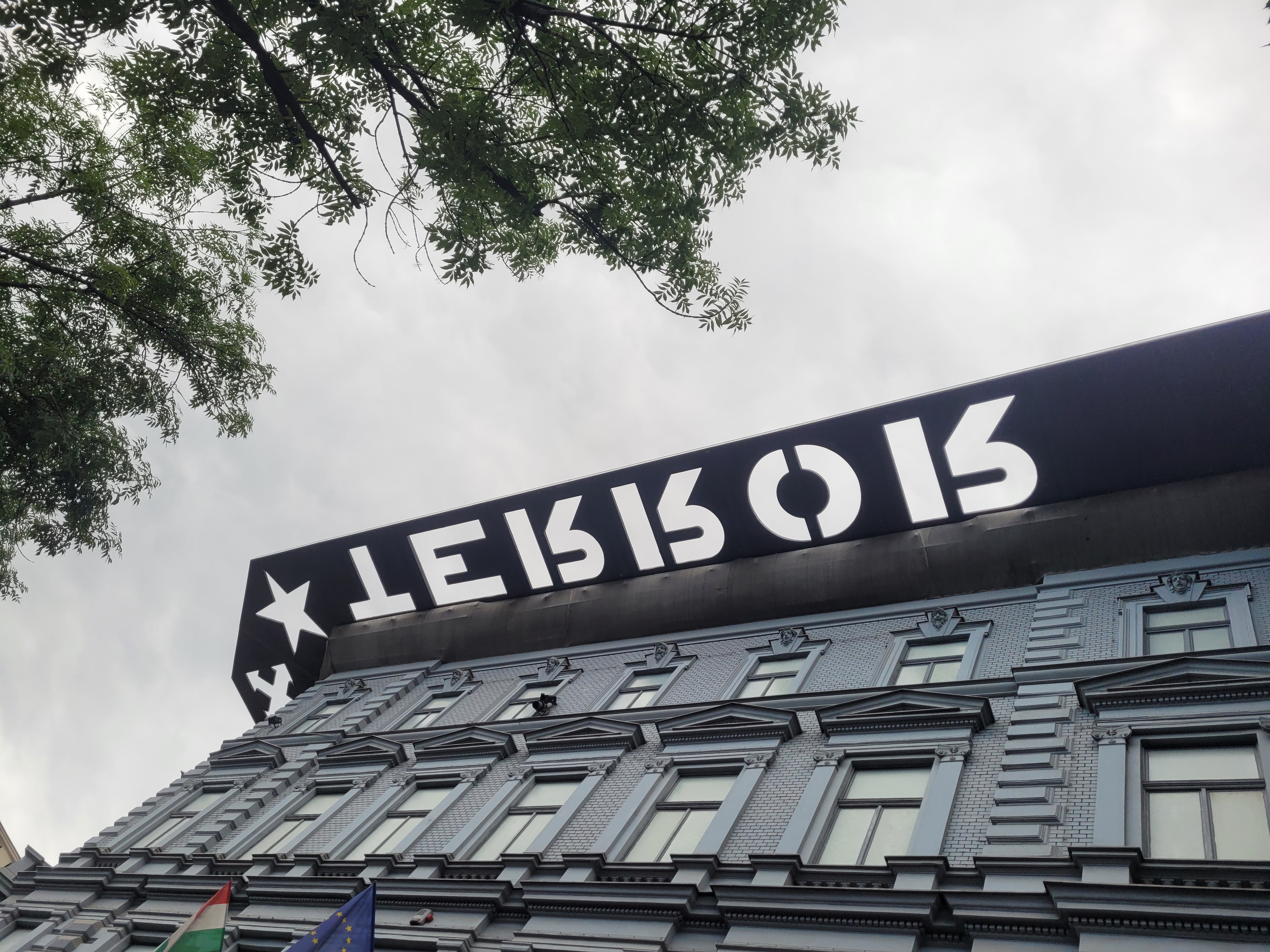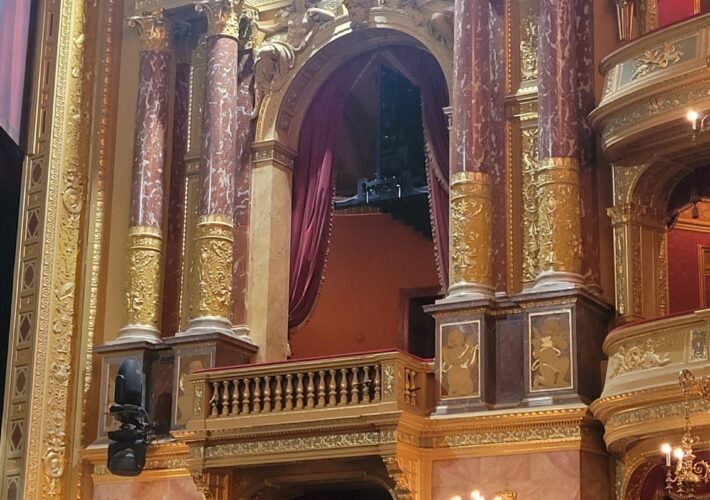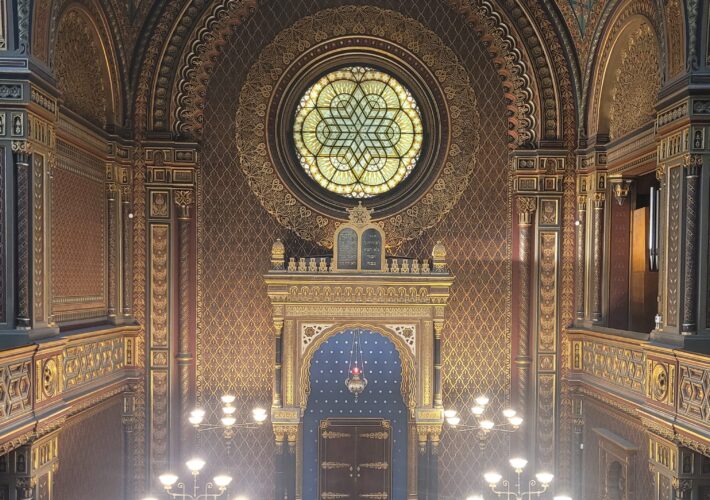Destination guide for Budapest’s House of Terror Museum.

At the corner of 60 Andrassy Ut sits a gray, nondescript building with the word “Terror” emblazoned on its roof. That word speaks to the unimaginable horrors that occurred during two of Hungary’s darkest chapters: rule by the Arrow Cross Party during World War II, followed by communist rule supported by the Soviet Union. In 1944, the building was called the “House of Loyalty” and served as the headquarters of the Arrow Cross Party. Then, from 1945 to 1956, the communist groups AVO and AVH occupied the building. It was during those years, in the basement of that building, that thousands of Hungarian citizens were interrogated, tortured, and executed.
Visitors are not allowed to take pictures in the museum, which is why there are no images in this post.
The House of Terror museum is not part of the Rick Steves’ Best of Prague and Budapest tour, so several tourmates and I decided to visit when we had some free time one afternoon. I opted to visit this museum based on my interest in history, my tour guide’s recommendation, and my desire to gain a deeper understanding of Hungary’s history.
My Thoughts on the House of Terror
The House of Terror is a good museum that has the potential to be great. On the positive side, the museum presents interesting information and some exhibits, especially those in the basement, do a good job of conveying the horrors Hungarians endured during World War II and the Communist Era. I found the displays on the 2nd floor and in the basement to be better curated than those on the 1st floor, which lacked cohesion in its storytelling. At the end, the “Gallery of Victimizers” offers an evocative glimpse at those who served and supported the Arrow Cross or the communists, many of whom never faced justice.
Where does this museum fall short? Captions and atmosphere. In some rooms, there was minimal text, leaving visitors somewhat at a loss as to what they were viewing. At times, information cards were available, and those helped provide valuable context. As for atmosphere, the mix of loud music and media was distracting. The first room I entered was blasting industrial-style techno music, which did not match the somber tone of the museum.
Although the House of Terror is not a perfect museum, I do think it merits a visit. Budapest’s story is seldom shared in history textbooks and documentaries, so this museum offers an important learning experience. I wouldn’t categorize it as a “must-see” site, but if you have a few days in Budapest, I do recommend a visit.

I highly recommend that visitors rent an audio guide. The audio guides cost 2000 HUF and are available in several languages.

One thing to note is that while the building that houses the museum was utilized by members of the Arrow Cross and various communist parties, only one room remains in its original state.
Visiting the House of Terror
The House of Terror can be easily accessed by public transportation. Near the museum are several bus stops, and less than a block away is a metro station for line 1. For those who prefer to walk, as a reference, the House of Terror is roughly a 20-minute walk away from Heroes’ Square and a 10-minute walk from the Hungarian Opera House.
My tourmates and I visited on a Saturday afternoon, and while it was crowded, there were no lines to enter the museum. There was, however, a line to enter the elevator that takes you to the basement. This elevator descends rather slowly, as it features a screen that shows a brief video about the events that occurred in the basement. Altogether, our visit took approximately two hours.

Visitors with claustrophobia may have issues with the elevator ride to the basement. As I described above, the elevator descends slowly and can be packed with people.

The museum’s store sells a fantastic guidebook with images of the various exhibits. I purchased this book as guests are not allowed to take pictures.

The House of Terror offers reduced admission and free entry to qualifying visitors. Visit the museum’s admission page for more information.






Leave a Comment